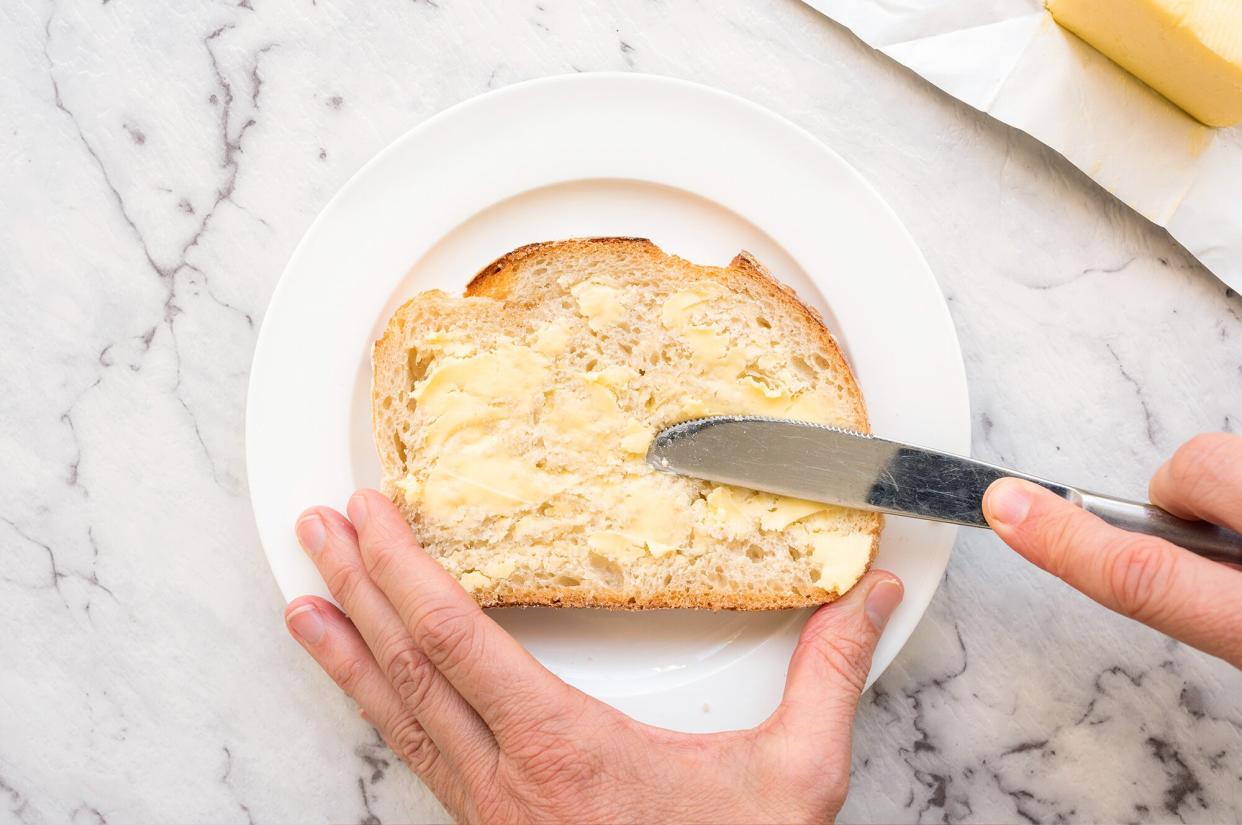Should You Refrigerate Bread?

Getty Images
A loaf of bread can go a long way, from morning toast to lunchtime sandwiches to accompanying a dinnertime bowl of soup. Whether you make it yourself or you buy your bread locally, you probably always have a loaf on hand. However, bread will quickly spoil if not stored properly. Should you put your bread in the refrigerator or keep it out for optimal freshness? We asked food safety experts.
Related: 20 Bakery-Worthy Bread Recipes You Can Make at Home
Where's the Best Place to Store Bread for Freshness?
There are a couple of factors that come into play when considering whether to refrigerate your bread or store it on the counter. If you plan to eat the bread quickly, you can store it on your countertop, says Margarethe A. Cooper, PhD, assistant professor of practice and Victor P. Smith Endowed Chair in Food Safety Education at the University of Arizona. "But if you take a long time to consume your bread, [if your kitchen] is warm and humid, and especially if the bread is homemade, it is worth refrigerating to prevent mold growth," she adds. Homemade bread does not contain the preservatives that help keep it from spoiling that most store-bought breads have.
How Does Refrigerating Bread Change it?
Lisa Young, PhD, RDN, author of Finally Full, Finally Slim ($18.99, barnesandnoble.com), nutritionist in private practice, and adjunct professor at New York University in New York City explains that the cold temperature in the refrigerator causes the starch to recrystallize and become dry. The result? The bread will develop a stale flavor and texture. If you tightly wrap your bread in plastic and put it in the refrigerator, you can help slow the staling process. Freezing bread is an option to help prevent it from going stale and developing spoilage microbes. (Keep in mind that when you thaw frozen bread, it will get stale faster than if it were refrigerated, Cooper says.)
Toss Bread Out if You Notice Signs of Spoilage
Wherever you store your bread, if you see any mold (fuzzy green or black spots), you'll need to discard the entire loaf. It's important to dispose of the whole package, even if you only see mold on a couple of slices, since it can produce harmful toxins (fungus). Ropiness is another sign that bread is going bad; this happens when bacterial spores make it through the baking process and grow inside the loaf. "This type of spoilage can occur in bread and in baked goods with higher moisture content," notes Cooper. "If the inside of the loaf develops a soft mass that is stringy with a fruity smell, that indicates rope, or bacterial spoilage of the bread." Young adds that you should also toss out your bread if it becomes very dry and hard and if it starts to smell sour.

